Historical and Preservation Society of Pottawattamie County
County Seat Council Bluffs, Iowa
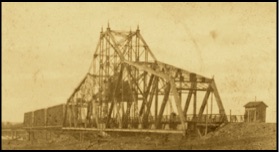
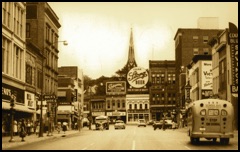
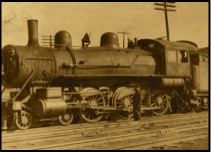
(Story by Richard Warner. Dr. Warner serves on the board of directors of the Historical and Preservation Society of Pottawattamie County.)
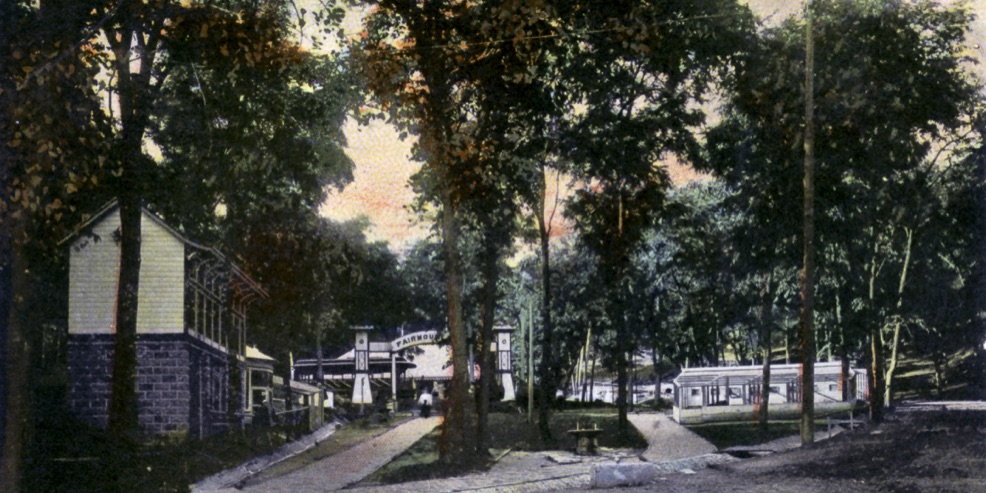
Fairmount
Park
As a city councilman, Andrew Graham was well aware of the many benefits Council Bluffs had to offer. But it was the park system that held the potential to really made the city something special. During his over four decade tenure on the park board Bayliss, Cochran, Big Lake (Lake View), Cook, Graham, and Prospect Parks were added, but it was Fairmount that was Mr. Graham’s favorite. That crown jewel of the Council Bluffs park system was actually born out of failure.
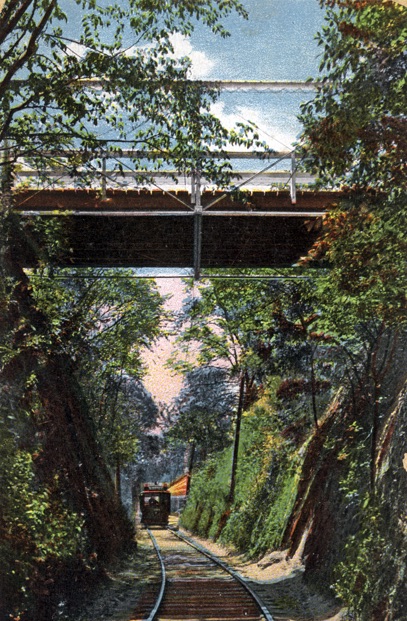
The wooded, steep hills that would become much of Fairmount Park had been platted into housing lots as “William’s Second Addition” and a portion of “Green’s Addition.” Many of the lots had been sold to nonresidents who had never seen what they had bought unaware of its rough topography. The planned developments never took place and the city acquired ownership of many lots due to delinquent taxes.
Andrew Graham took over the city’s lethargic park department with an aggressive plan of developing the Council Bluffs park system into the envy of the country. He saw the value of this property and prodded the city into acquiring title to all of the land through tax sales and condemnation in October, 1879. General Dodge added to the property by donating some of his own adjacent land. Brush was removed, trees were planted, horse watering troughs provided, and a street car line added to make the new park accessible. Its zoo, bird houses, swan pond, pavilions, scenic views and abundant trails made it a civic showpiece.
The park has never been a static entity, changing over time with the desires of the city’s leadership and economic conditions. Animal cages were relocated from the front entrance to the valley near the swan pond in a beautification move. An entrance was created at the head of Ninth Avenue with clay tennis courts adjacent to the road before it made its winding ascent to the point. Funding from the Kiwanis Club allowed the remodeling of a building from an old tourist camp into an enclosed picnic shelter with a walkout lower level “containing every needed convenience” making possible use the park when the weather was bad. A greenhouse was added, as well as a building that served as parks department headquarters. The road through the park was paved in 1953.
Not every distinctive feature was planned by the park board. The unmistakable twin towers of KOIL radio between 1925 and 1936 at the top of Huntington Avenue led to what had officially been “Dodge Lookout” atop “Mount Graham" becoming “KOIL Point” in the local lexicon, a name heard yet today.
The swan pond was used for ice skating in winter, with a coal stove for heat in the adjacent shelter as recently as the 1960s. Playground equipment bearing the name of Council Bluffs’ Giant Manufacturing was abundant atop the western bluff and the valley of Fairmount Avenue. The shear walls of the bluffs made for as exciting a climbing experience as any child could imagine. In 1974 a carillon was erected near the top of Mount Graham in remembrance of Jean and Inez Bregant, who left their estate to the city.
Not every plan materialized. The purchase of two burros from the Rocky Mountains that visitors could ride to the top of the bluffs never transpired. The Park Commission’s 1904 proposal to erect a statue of General Dodge on horseback never made it past the drawing board, nor did a plan to make the park the site of the Western Historic Trails Center. Identified as the preferred of two potential sites in a 1990 National Park Service study, the Fairmount Park location would have tied the new western migration interpretive center to other nearby historical sites: the Historic General Dodge House, RailsWest Museum, and “Squirrel Cage” jail. It would also afford a magnificent view of the Missouri River to the west, the direction the settlers traveled.
Hiking through the park and stumbling across old foundations and other reminders of grand things that once were makes one wonder why it changed. Much of that can be attributed to progress and altered tastes. As air conditioning became commonplace in homes the motivation to go to the park to seek a cool breeze went away. Radio, movies and later television provided competing forms of entertainment. An arsonist did in the Kiwanis shelter and the Bregant Carillon was troubled by complaints of noise and technical issues before being silenced for good in the 1980s.
Although the metropolitan area has grown beyond what early park planners could have possibly imagined, and automobiles have effortlessly eliminated the necessity of burros for sightseers not wanting to hike the steep bluffs to take in the views, some things remain the same. A visitor can still experience nature just moments from the city-- and perhaps that’s more important than ever today. As an early park report noted, “Without the beauty of form and color, of trees, of flowers and green fields, of sky and clouds and water, what a dreary place the world would be.”
As improvements were added the Board of Park Commissioners began to get complaints that Fairmount Park was hard to get to. The city agreed to cut a path through a hill and streetcar service via a dead end route from Madison Avenue brought visitors to the park. The new line opened October 1, 1897 looping a newly constructed pavilion before returning to Graham Avenue. A wooden bridge was built as part of a scenic drive over the cut in 1893 supported by pilings driven into the banks (below) and replaced by a metal bridge (above) a few years later.
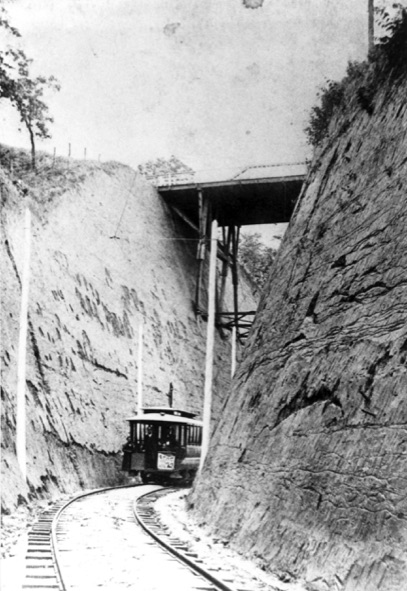
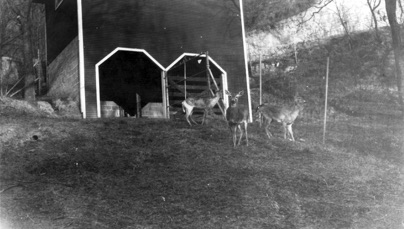
(Above) The Fairmount Park zoo flourished in the early part of the 20th Century and at various times housed monkeys, deer, bear, swans, a bobcat, birds and a raccoon. It closed in the 1930s.
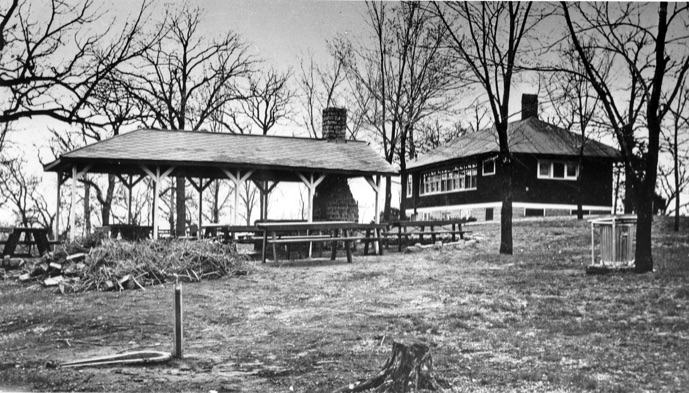
(Below) The Kiwanis Club provided funds to remodel an abandoned building from a bluff top tourist camp into a picnic shelter complete with modern kitchen.